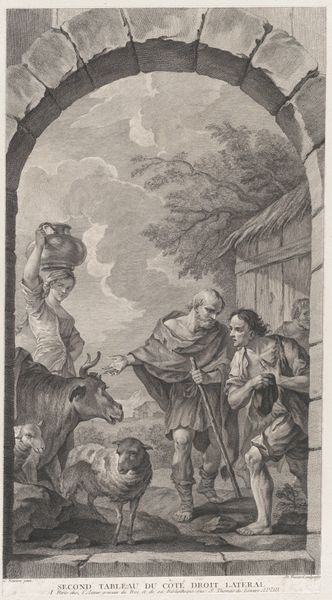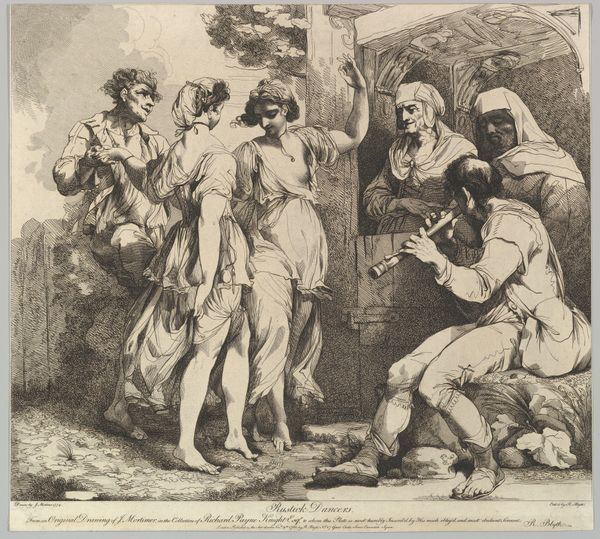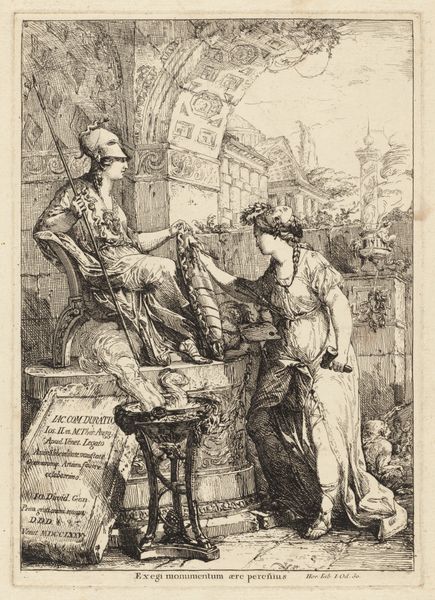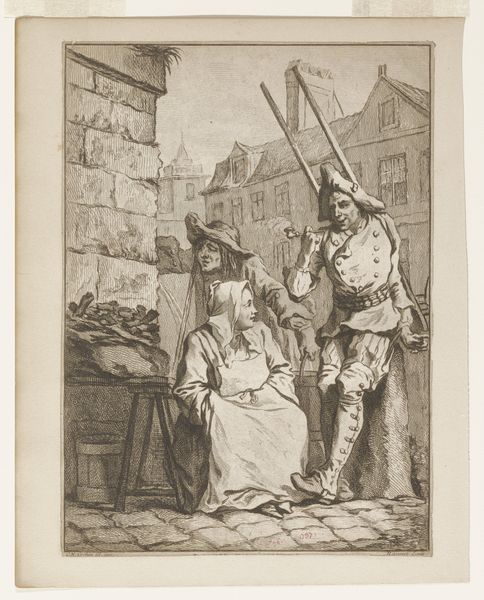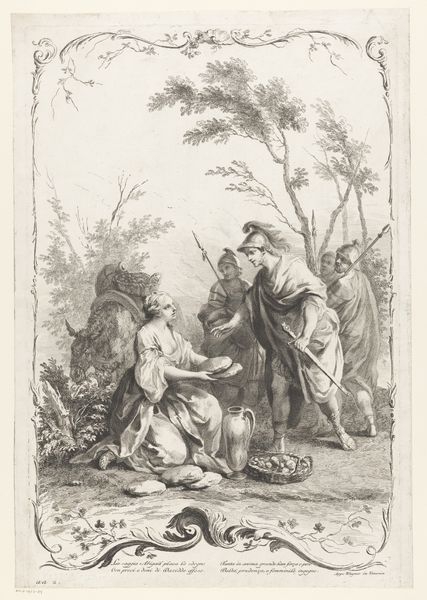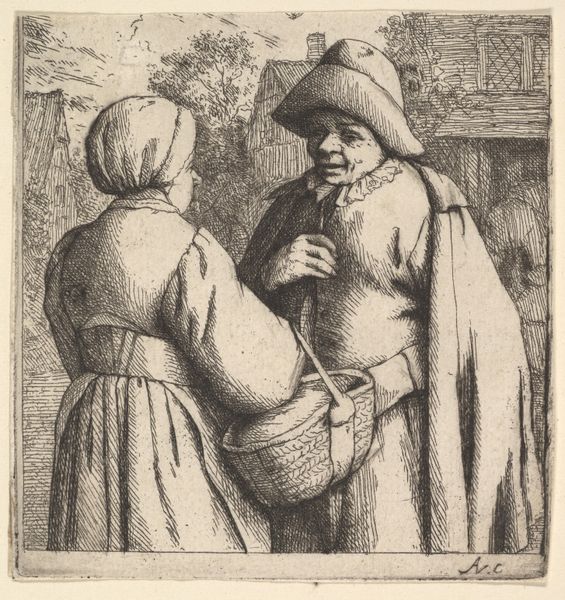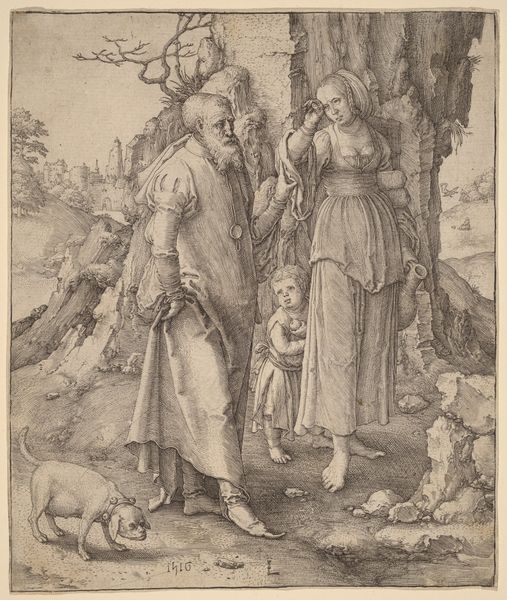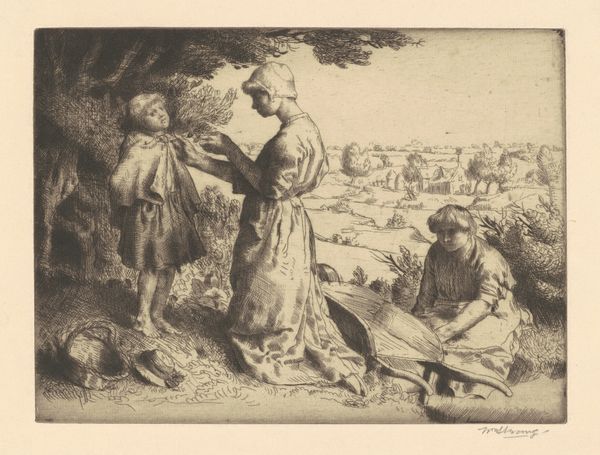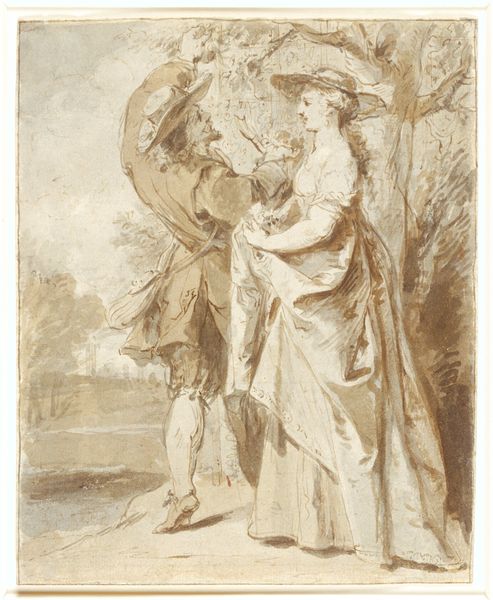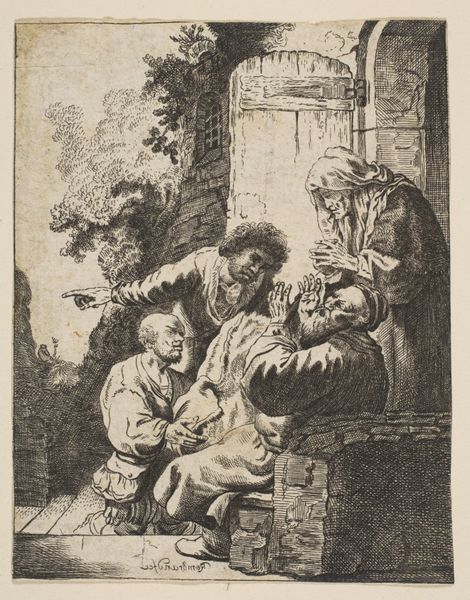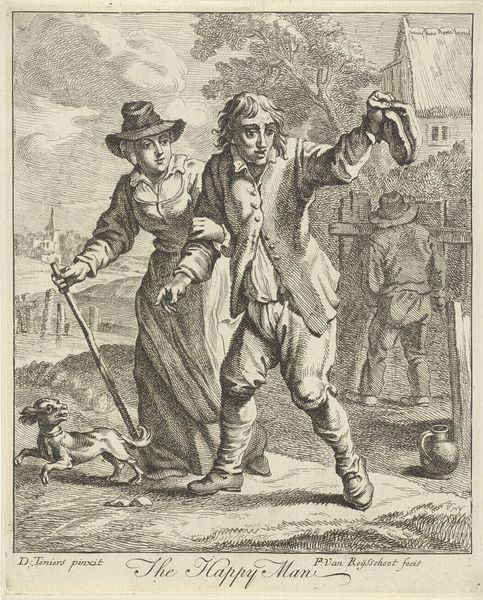
painting, oil-paint
#
portrait
#
dutch-golden-age
#
painting
#
oil-paint
#
figuration
#
painting painterly
#
genre-painting
#
realism
Dimensions: height 37 cm, width 33 cm
Copyright: Rijks Museum: Open Domain
Curator: Here we have Gabriel Metsu’s “The Herring Seller,” painted around 1661 or 1662. It is part of the Rijksmuseum's collection and offers us a glimpse into everyday life in the Dutch Golden Age. Editor: My first thought? This has that cozy, dimly lit feeling typical of Dutch painting, like you’re peeking in on a private moment. Though, between the grimace on that seller and the wary glance from the customer, I'm not sure "cozy" is quite right! Curator: You've picked up on an interesting tension. Metsu specialized in these genre scenes. Paintings that are less about heroic deeds or portraits of the elite, but snapshots of regular people going about their day. Editor: Snapshots indeed. It's like Metsu just wandered into a marketplace, sketched this on the spot, and left with a subtle smirk, amused at what he just saw. I imagine this kind of interaction was as commonplace as getting coffee is today. Though less convenient, definitely less convenient! Curator: The detail he includes serves to legitimize this depiction. Consider the aging of the seller's face, the detail on the texture of her clothes. Metsu also includes visual cues of trade and labour, adding credibility to the scene. These scenes affirmed the value of the merchant class and are interesting examples of realism for their time. Editor: It makes you wonder, though, what else isn’t included. What happens just before, or just after, this frozen moment. It strikes me as deeply theatrical. Did Metsu stage this interaction, or something similar? Or is he an incredibly good observer? Or maybe a bit of both? Curator: These kinds of paintings played a specific role in Dutch society. They reflect an emerging national identity rooted in trade and industriousness, but they also promoted ideas about community through their depictions of common places and situations. So, realism—yes—but always serving a larger cultural purpose. Editor: It also kind of flips the whole "art world" thing on its head. No grand landscapes or mythical creatures. Just a woman buying a fish. How incredibly…real. How subversive. But how like, fishy. Curator: Precisely! Metsu is taking everyday life and placing it in the context of fine art. It makes you wonder how these seemingly small paintings influenced societal values or how perceptions of everyday life developed through viewing these canvases. Editor: In a way, maybe Metsu is reminding us to look closer at the small moments in our lives, because, who knows, maybe those fleeting encounters are the very things that reveal what really matters in a given time. Thanks for sharing. Curator: My pleasure!
Comments
rijksmuseum about 2 years ago
⋮
A woman selling fish has knocked on the door of an elderly customer, who approves a herring glistening in the sun. Bright light also falls on the blushing fish seller, who forms a fine contrast with the crooked old woman. Gabriël Metsu excelled in the rendering of materials and textures. The differences in texture of the skin of the fish, the old woman, and the young woman are particularly beautifully realized.
Join the conversation
Join millions of artists and users on Artera today and experience the ultimate creative platform.
